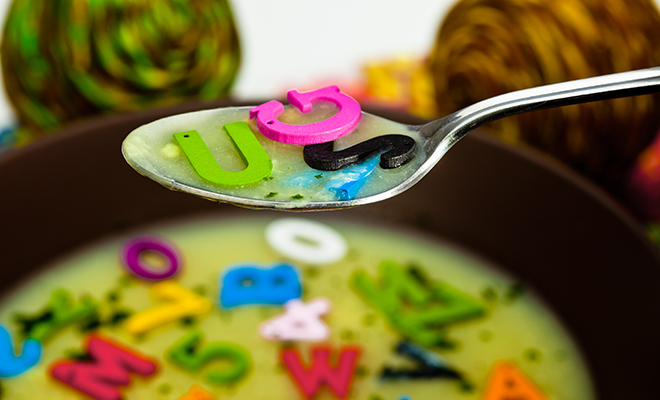
Seeing a rainbow of numbers
Valerie has known something was different about her ever since she could remember. As a child, she would tell teachers the gender of letters and numbers and recalls getting curious looks. She also would tell family or friends that a certain song sounded like winter or that the number four was yellow. She didn’t realize what she was experiencing until years later when she began researching her “symptoms.” Valerie has synesthesia, a rare neurological condition in which the senses are crossed.
Synesthesia is a perceptual condition in which the stimulation of one sense triggers an automatic, involuntary experience in another sense. Its name derives from the Greek, meaning “to perceive together.” Synesthesia has many varieties and can occur between just about any combination of senses or cognitive pathways.
Approximately 1 in 25,000 people are affected by synesthesia, although the number of cases seems to be increasing. This could be due to an actual increase in the condition or an increase in self-reports generated by greater public awareness. People with developmental synesthesia are called synesthetes and typically report having the condition since childhood. They generally cannot provide an explanation of how or when they may have learned to associate the experiences.
More common in women than in men, synesthesia is often hereditary, and although it can occur later in life, adult onset synesthesia is rare. Left-handed people tend to be more synesthetic than right handed folks, but the reason for this has not been clearly determined. Often, synesthetics have excellent memories but may experience difficulty with math or navigation.
Synesthetes may see sounds, taste words or feel a sensation on their skin when they smell certain scents. Some, who possess what researchers call conceptual synesthesia, see abstract concepts, such as units of time or mathematical processes, as shapes projected either internally or in the space around them. And many synesthetes experience more than one form of the condition.
Although the condition is being researched more now than ever, no one really knows what goes on in the synesthetic brain. One explanation is that the region of the brain that normally receiving information from the ears also gets some information from the eyes. It is also likely that neural pathways allow cross-talking between two different sense centers in the brain and this causes the condition.
Synesthesia is extremely individualized; it doesn’t occur the same way in the people it affects. In fact, it takes on many different forms since it involves various parts of the human brain. It can range from tasting colors to smelling sounds. Some of the most common forms of synesthesia are described below.
Grapheme-Color Synesthesia
In the most common type, people see or hear words in color. A person who experiences this may associate or see individual letters or numbers with a specific color. Usually, two people won’t report the same color for letters and numbers. However, many synesthetes will see some letters the same way; for example, A is likely to be red.
Number-Form Synesthesia
A number form is essentially a mental map that consists of numbers. When a person with number-form synesthesia thinks about numbers, a number map is involuntarily visualized. It is sometimes suggested that the number forms are a product of cross-activation between regions in the parietal lobe, a part of the brain that is involved in numerical and special cognition.
Personification
In this form, also known as ordinal-linguistic personification, or OLP, an individual will associate ordered sequences with various personalities. Ordered sequences may include numbers, letters, months and so on. For example, a person with OLP may look at the letter A and think that A is a rude letter, while other synesthetes may feel the same letter conveys happiness or loneliness. In addition to feeling that some numbers have a personality, a synesthete may also perceive a personality from an object.
Lexical-Gustatory Synesthesia
Lexical-gustatory synesthesia is a rare form of this condition. For people who experience this kind of synesthesia, hearing certain words or phonemes evokes different tastes.
According to research, the tastes experienced by synesthetes with this form of the condition are flavors they experienced early in life.
Do You Relate to Synesthesia?
If you’re reading this and some of the symptoms or issues of synesthesia seem familiar, you may want to take a simple ten-question quiz at synesthesiatest.org/test-yourself to help get answers. Although the test isn’t official, it may provide a better understanding of whether your experiences are synesthetic in nature.
Many of us may feel sorry for people like Valerie. How can someone walk around all day with various colors, shapes and sensations bombarding them? Isn’t that burdensome? Perhaps, but in most instances synesthetes find their condition enjoyable and not an interference with normal life. In fact, some pity non-synesthetes for having what the synesthetes consider one-dimensional sensory perceptions and not being able to see the world as they do. HLM
Sources: synesthesiatest.org, mnn.com, apa.org and synesthesia.info.







